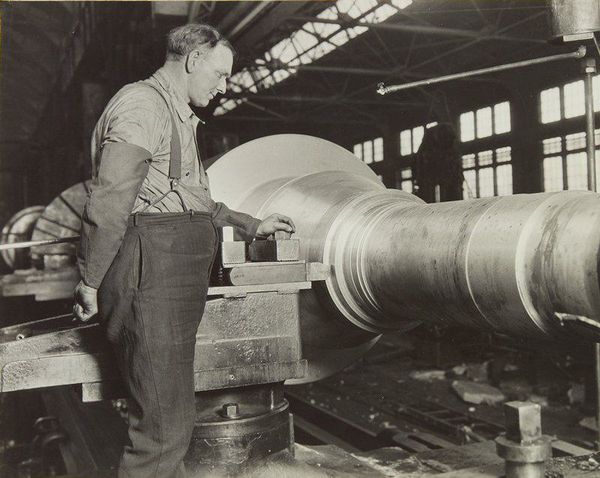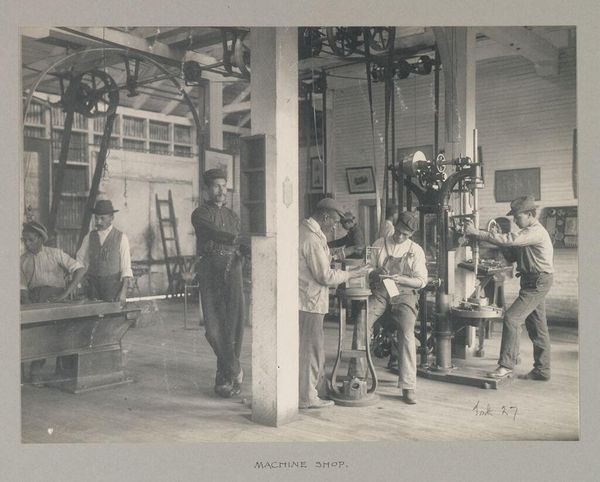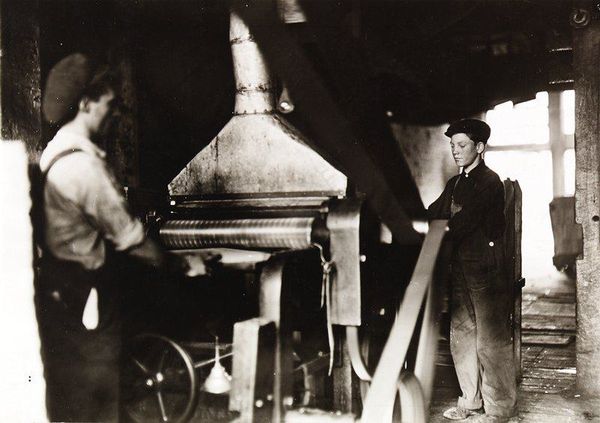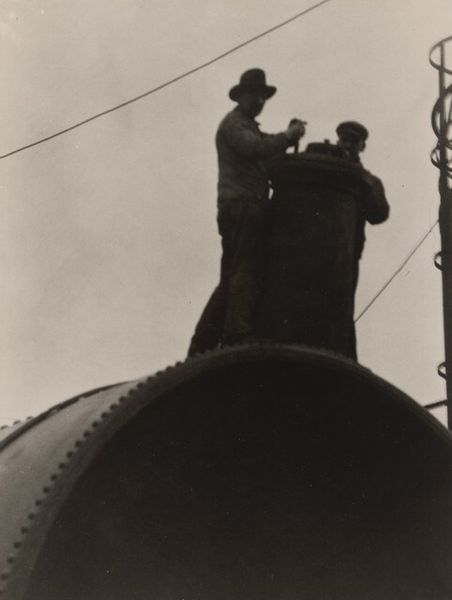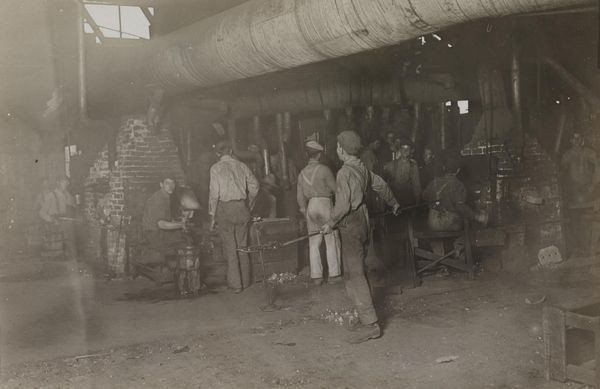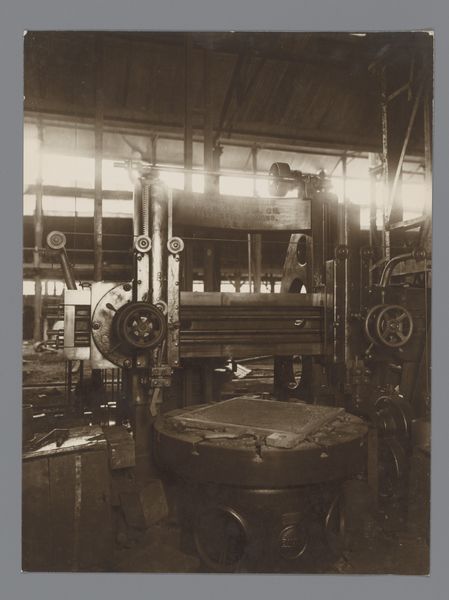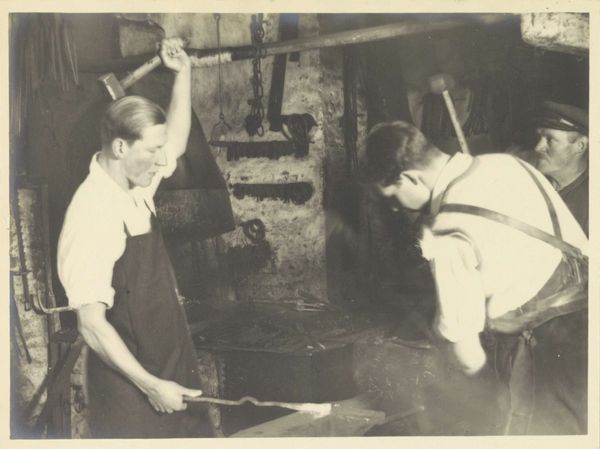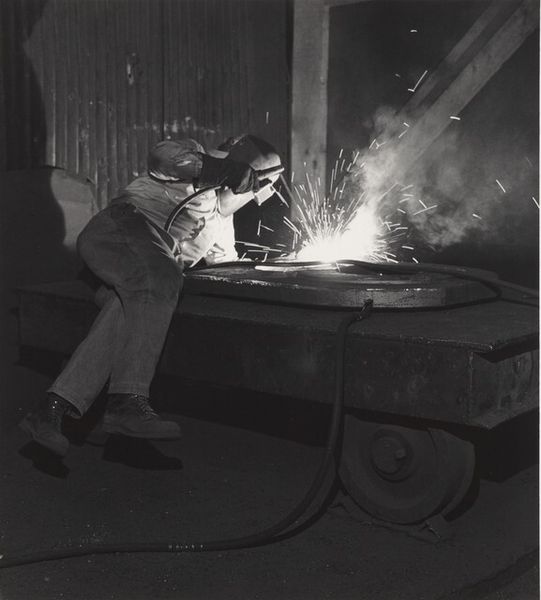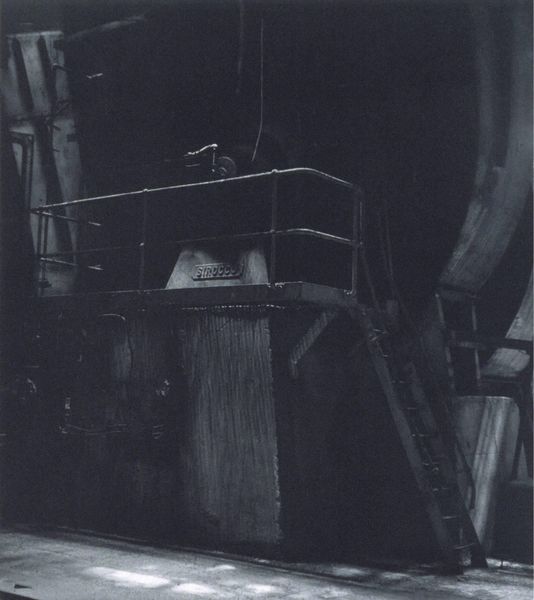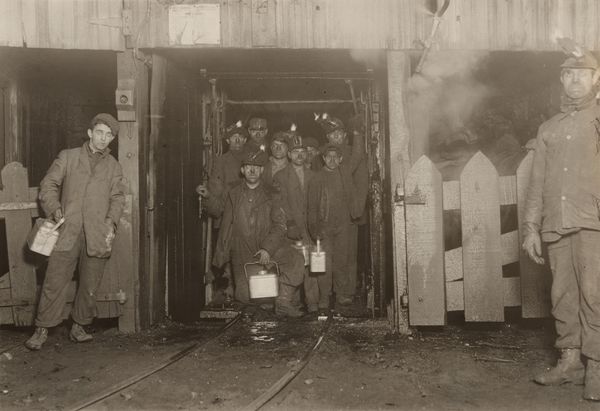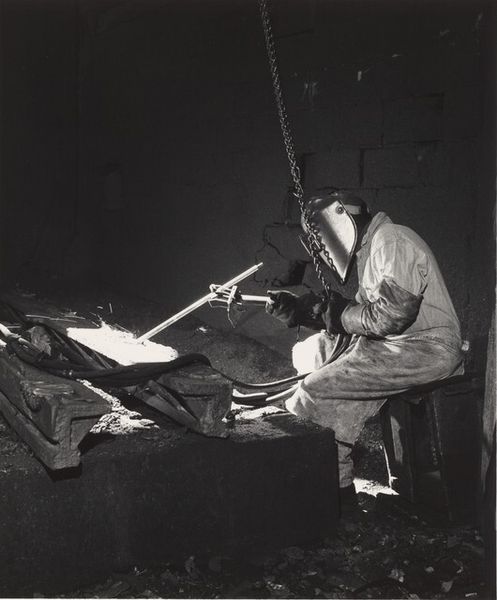
Dimensions: image/sheet: 33.7 × 22.5 cm (13 1/4 × 8 7/8 in.) mount (1): 34 × 22.9 cm (13 3/8 × 9 in.) mount (2): 50.8 × 40.6 cm (20 × 16 in.)
Copyright: National Gallery of Art: CC0 1.0
Editor: This gelatin silver print, "The Drop Forge," circa 1925, by Harry Kinzi Shigeta, has an incredibly powerful feel. The sparks are mesmerizing. What do you see in this piece, especially regarding its social commentary, if any? Curator: This image, through a historical lens, speaks volumes about the glorification, but also the inherent risks, of industrial labor in the early 20th century. Consider when it was made. The Ashcan School movement was challenging established artistic norms by depicting everyday life, especially working-class life, with stark realism. Editor: So, Shigeta isn’t just showing us a factory; he's making a statement about the worker's experience? Curator: Precisely. Think about how the composition reinforces this. The massive machinery dwarfs the workers, emphasizing their physical vulnerability yet also their critical role in this industrial process. The sparks aren't merely aesthetic; they symbolize the intense, often dangerous conditions endured by these laborers. The use of photography, as a medium, further lends a sense of veracity and unmediated observation, strengthening its commentary on societal conditions. Does the photographer portray it accurately or is it glorified? Editor: I see. The 'old-timey' feel, along with the dark shading, almost romanticizes it, despite the inherent danger you mentioned. It's like it is glorifying hard work or productivity? Curator: It is both. It documents the shift in public perceptions of labor during an era defined by mass production and innovation, with industrial settings evolving into visual symbols of progress. And it prompts us to think about whose perspectives and narratives dominated the historical record, influencing our contemporary appreciation. Is it a story *about* workers, or a story for people in power? Editor: I hadn't thought of it that way. This makes me appreciate the piece so much more. It's not just a snapshot, but a statement. Thanks! Curator: Absolutely. Recognizing how social, cultural, and economic powers influenced artistic depictions adds a rich and thought-provoking aspect to the artwork, creating dialogues for people.
Comments
No comments
Be the first to comment and join the conversation on the ultimate creative platform.
